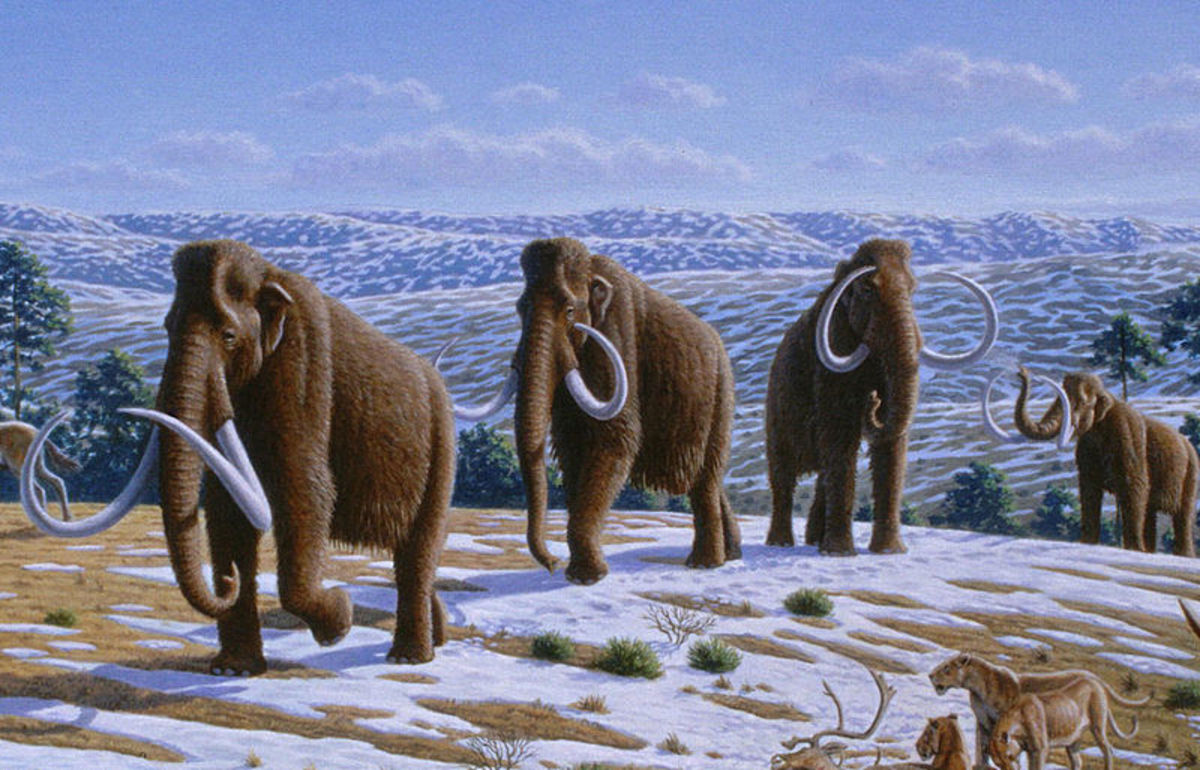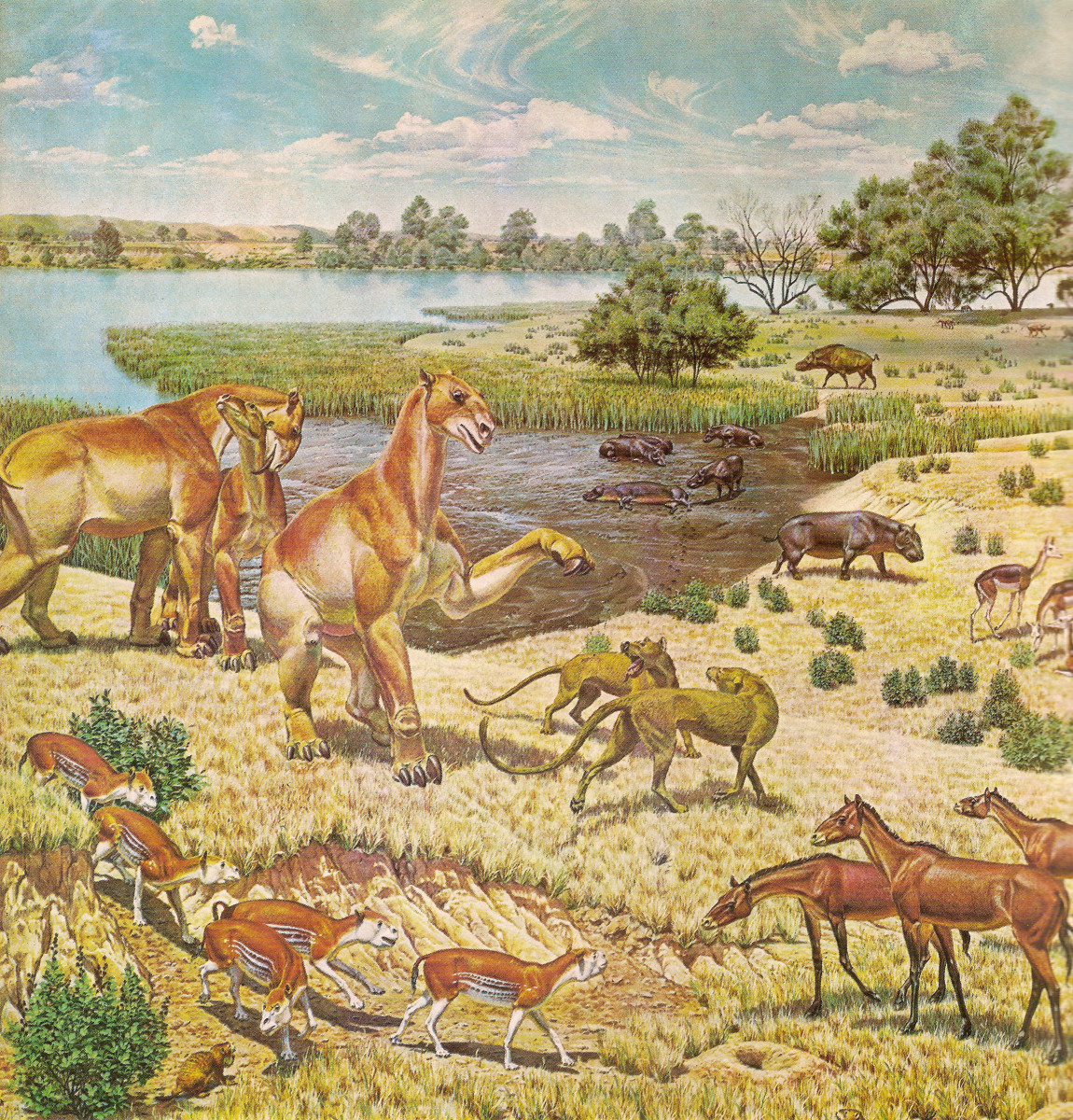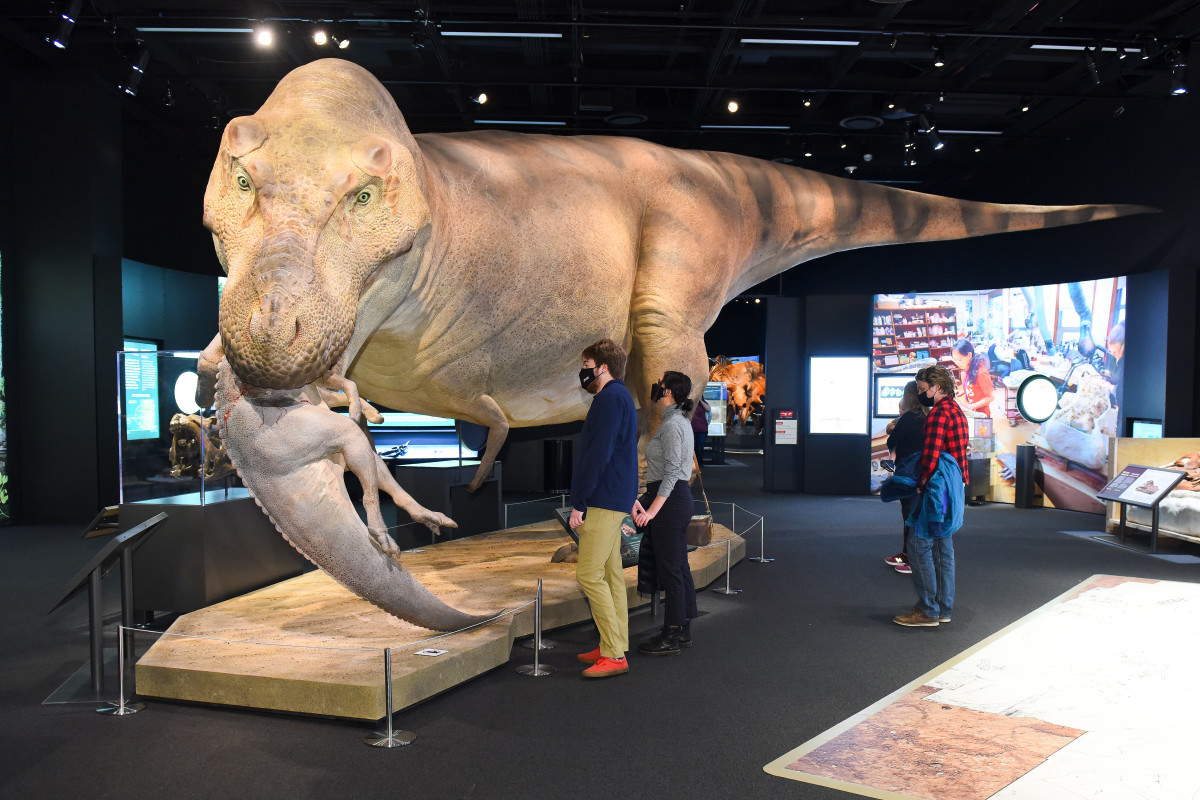- HubPages»
- Education and Science»
- Life Sciences»
- Paleontology»
- Prehistoric Life
Triceratops
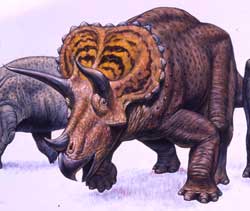
One of the most well-known Ceratopsian dinosaurs in the world, Triceratops was a herbivore that lived 68-65 million years ago during the late cretaceous period in what is now North America. It was about 25-30 feet long 6-9 feet high and could have weighed between 6 and 12 tons. It's most striking feature like all ceratopsians, was it's huge skull, complete with frill that covered the neck, a pair of lethal 3 foot long horns above each eye, and a smaller horn above it's nose. This gigantic skull was connected to a ball and socket joint at the neck, allowing Triceratops to swing it's head in a deadly circular motion. Triceratops like other ceratopsians also sported a powerful parrot-like beak, that was more than capable of delivering a nasty bite to any would be predator such as a Tyrannosaur. Tyrannosaurs were Triceratops arch nemesis. There is a wealth of fossil evidence that shows these two dinosaurs clashed on a regular basis.
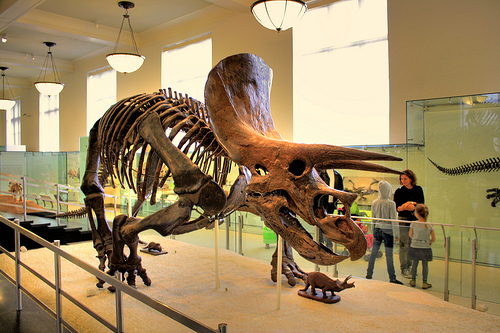
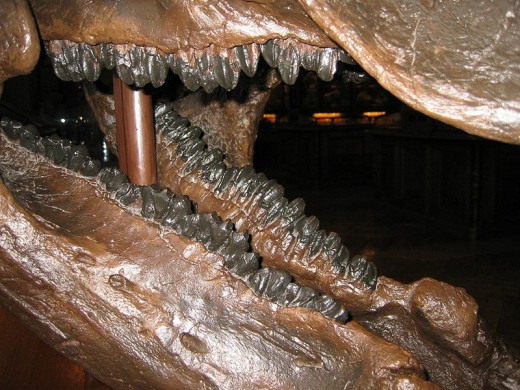
Lifestyle and habitat
Triceratops probably spent much of its time grazing on plant matter. It used its beak and powerful jaws with a battery of hundreds of teeth lined up in rows that would be replaced through it's lifespan. These teeth were particularly tough in design to shred and grind cycads, ferns, and other low-lying vegetation. In order to maintain such a massive size Triceratops was likely eating all the time. It is portrayed as being a herding animal, although fossil records don't indicate this. Many Triceratops finds were of single animals. However a few of it's relatives like Centrosaurus and Pachyrhinosaurus have been discovered in bone beds containing hundreds of individuals at a time. Triceratops were very common in the late cretaceous period with paleontologists like Bruce Erickson claiming to have seen over 200 individual skulls in the field alone.
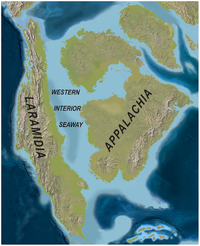
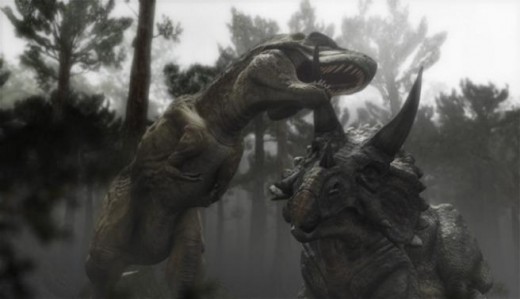
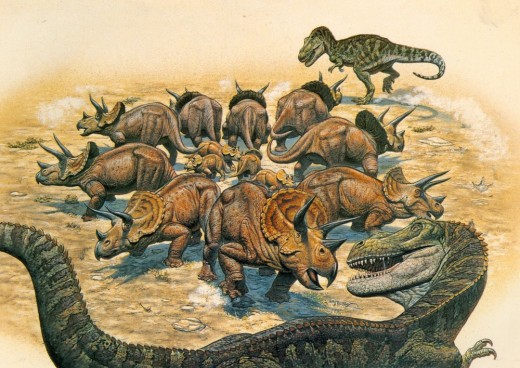
Ecology and predators
During the late cretaceous period it was a bit warmer in North America than it is today, however throughout the period the earth had began to cool because of continental drift. This is due to the plate tectonics which cause the Americas to gradually move westward, and making the Atlantic Ocean wider. The Western Interior Seaway was a huge inland sea that split the continent of North America into two continents, Laramidia and Appalachia. During most of the mid- and late-Cretaceous Period the dinosaurs had seen much success especially the Triceratops and it's relatives. Aside from Anatotitan, Triceratops was a most common sight in the cretaceous landscape. Normally a full grown Triceratops would have little to fear from most predators. Their young however were a different story. It has been theorized that Triceratops would get together to defend their young and form a ring with the babies in the center and the adults horns facing outward to deter predators. However their is no fossil evidence to validate this claim. Fossil evidence does show that from time to time, Triceratops' would get into battles with Tyrannosaurs. There has been findings of Triceratops' frills being bitten, as well as horns that appear to have been ripped off, and even bones that have been chomped on by Tyrannosaurs. This shows a clear predator prey relationship between the two animals.
Triceratops Horridus Facts and Pictures
- Triceratops Horridus Facts and Pictures -- National Geographic Kids
Learn about Triceratops Horridus and get information, facts, and more about dinosaurs from National Geographic Kids.
Triceratops- Enchanted Learning
- Triceratops- Enchanted Learning Software
Triceratops, a three horned, frilled ceratopsian dinosaur, lived late in the Mesozoic, going extinct in the K-T extinction.
Triceratops - Cretaceous Period
- Triceratops - Cretaceous Period
Triceratops prorsus from Cretaceous period by Josef Moravec. Triceratops was the most numerous of the horned cretaceous dinosaurs. Triceratops had a skull that reached up 6 ft. Triceratops was herbivore and its largest predator was Tyrannosaurus rex.


